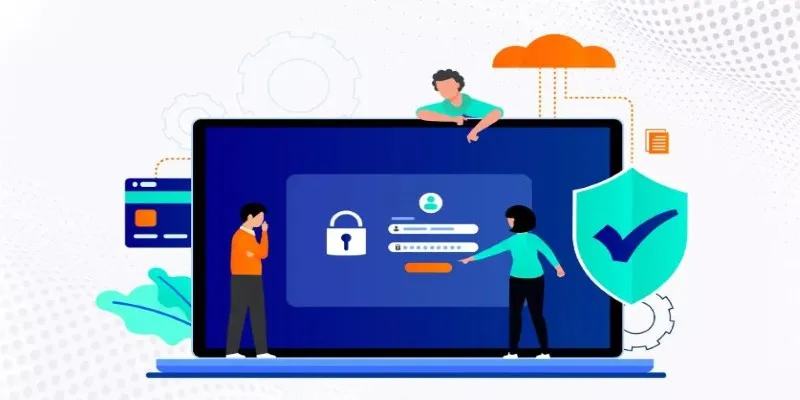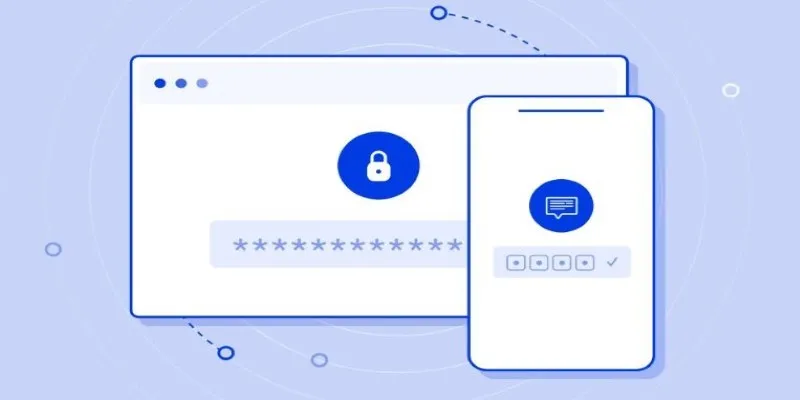Keeping Users Safe: A Simple Guide to User Authentication & Security
Imagine walking into your home and realizing someone copied your key, entered without permission, and tampered with everything inside. That’s what weak user authentication and security can do in the digital world—leave systems open to attack. With so many apps and services locked behind login screens, protecting access is more important than ever.
It’s no longer just about passwords. It’s about verifying identity, managing sessions, and staying ahead of evolving threats. In this article, we’ll explore the core tools—login systems, OAuth, and 2FA—that help keep accounts secure and make access safe and seamless.
The Basics: Login Systems and Their Role
At its core, user authentication begins with the login. It’s the front door. Traditionally, this meant a username and password combo. Though still widely used, it’s not always the most secure. Passwords can be guessed, stolen, or reused across platforms, creating a chain of vulnerability.
Modern login systems have evolved. They often include checks like CAPTCHA to prevent bots or brute-force attempts. Some platforms limit login attempts or temporarily lock accounts after too many failures. But these layers are only surface-level protections. The bigger goal is to confirm a person’s identity without making the process a hassle.
Session management is also crucial. Once logged in, how long should a session stay active? Should users be logged out after a while, or if the browser closes? Should there be inactivity timers? These choices shape the user experience and define security levels. Good login systems strike a balance—smooth for the user and tough for intruders.
The evolution of login systems has also introduced biometric logins, device- based access checks, and risk-based authentication. These methods use what you already have—your phone, your fingerprint, or your device history—to enhance security without complicating the process.
OAuth: The Secure Shortcut
OAuth is often called a protocol, but it’s more like a permission slip. It lets apps talk to each other securely without handing over the full set of keys. You’ve probably used it without even thinking—like signing into a new app with your Google or Facebook account. Instead of creating a new login, OAuth asks, “Can I use this trusted source to confirm who you are?”

Here’s how it works in simple terms: You want access to something, say, a third-party app. Instead of giving that app your password, you let it talk to a provider (like Google), which checks your identity and hands back a token. That token is proof—like a guest badge—that grants access for a limited time. No passwords are exchanged, and if the token is compromised, it can be revoked without affecting your main account.
OAuth reduces password fatigue. Users don’t need to manage yet another login. However, it also comes with its own risks. If your main identity provider is compromised, every connected service might be at risk. That’s why services using OAuth must apply limits, like the scope of access and token expiration.
From a development perspective, OAuth simplifies authentication while centralizing trust. But it needs proper implementation. Poorly secured tokens, weak redirect URIs, or lack of proper scopes can undermine its security. So, while OAuth can be the easier path, it’s not a shortcut for diligence.
2FA: That Second Lock You Really Need
Two-factor authentication, or 2FA, adds an extra step to your login process—but it’s crucial. It acts like a second lock on your digital door. Even if someone steals your password, they can’t get in without this additional proof. That proof could be a code sent by SMS, a prompt from an app, a fingerprint, or even a physical security key.
The strength of 2FA lies in its simplicity. After logging in, you confirm your identity using another trusted method. Most attacks rely on stolen passwords, so this added layer immediately stops a large portion of threats.
However, not all 2FA methods are created equal. SMS codes can be intercepted. Authenticator apps are safer and more reliable. Hardware tokens are even better but may not be practical for everyone. Biometrics are gaining ground, offering both convenience and security.
2FA has changed the way people think about account safety. It’s not just about protection—it’s about changing habits. More users now pay attention to recovery settings, unusual logins, and personal data exposure. For anyone serious about user authentication and security, 2FA shouldn’t be optional—it should be standard.
Keeping Security Tight Without Losing Users
Security matters, but so does ease of use. If logging in feels like a chore or a test, users won’t stick around. The heart of effective user authentication and security lies in striking a balance—strong protection without sacrificing convenience.

It starts with clear communication. When people understand why 2FA or login checks exist, they’re more likely to accept them. Avoid technical terms and explain features in plain language. Say “auto-logout for safety” instead of “token expiration.” Keep things human.
Design plays a significant role. Logins should feel smooth. Autofill fields, visible recovery options, and customizable 2FA settings help. If someone loses access to their device, there should be a quick and secure way to regain access.
In the background, tools like rate limiting, IP tracking, and suspicious activity logs keep systems safe without disrupting users. Passwordless login—like email-based one-time codes—makes life easier while enhancing security.
Good security is never done. It requires updates, patches, and awareness. When you make the experience seamless and the purpose clear, users stay protected—and happy.
Conclusion
User authentication and security are the backbone of trust in any digital system. With tools like OAuth and 2FA, we move beyond simple passwords to smarter, layered protection. The goal isn’t to complicate access—it’s to make safety feel seamless. When done right, security fades into the background while quietly guarding everything that matters. Whether you’re building or logging in, keep it simple, strong, and user-focused because real security should protect you without ever getting in the way.
Related Articles

Securing Access: The Simple Power of OAuth and 2FA

Real Work, Less Effort: The Power of Web Scraping and Automation Tools

Exploring Passkeys: How They Work and Their Advantages

Hudl's Automation Strategy for Enhancing User Experience

9 Best UX Research Tools to Elevate Your User Experience

Usability Testing Simplified: 8 Must-Have Tools for 2025

Discover the 10 Most Effective Userback Alternatives

VS Code Online, Replit and More: Top IDEs to Code Directly in Your Browser

Building Flexible Online Tools: The Power of Responsive Design
Popular Articles

How to Disable Right-Click on Your WordPress Website

Best Tools to Convert MP4 to DivX with High Quality

Step-by-Step Guide to Recording TeamViewer Meetings

Top 5 AMV Editing Software for Smooth and Professional Videos

Copilot Think Deeper Feature Upgraded with Microsoft’s o3-mini-high

How to Make a Creative Instagram Story Using Photo and Video Collages

Gmail Extensions That'll Turbocharge Your Inbox in 2025

Top 10 WordPress Plugins for Collecting User Feedback

Improve Your Shift Management with These Excel Alternatives

Choose 5 Free Instant Messengers: Enhance Your Messaging Experience

Thunderbird 136 Launches with Smarter Threading and Dark Reader

 mww2
mww2